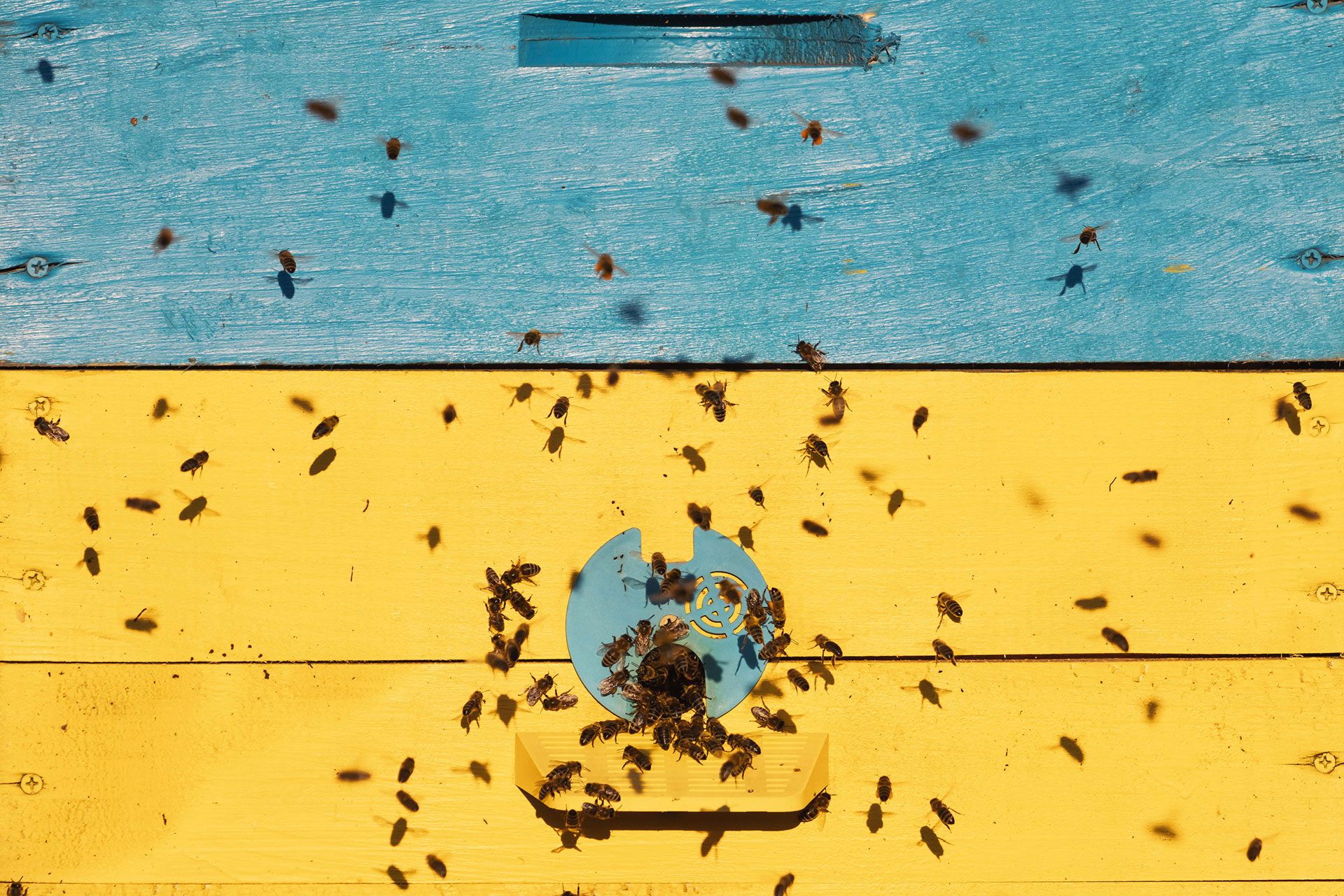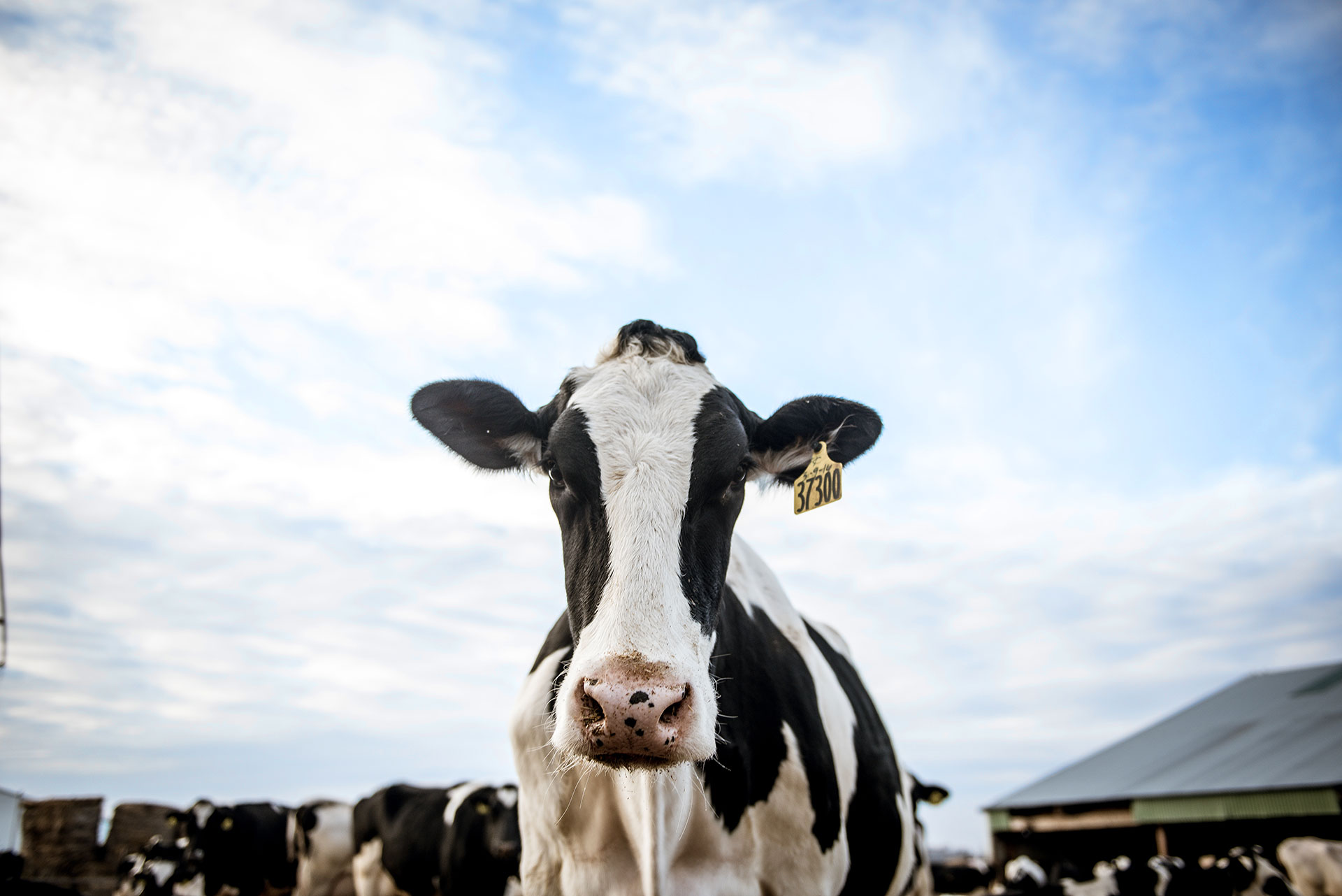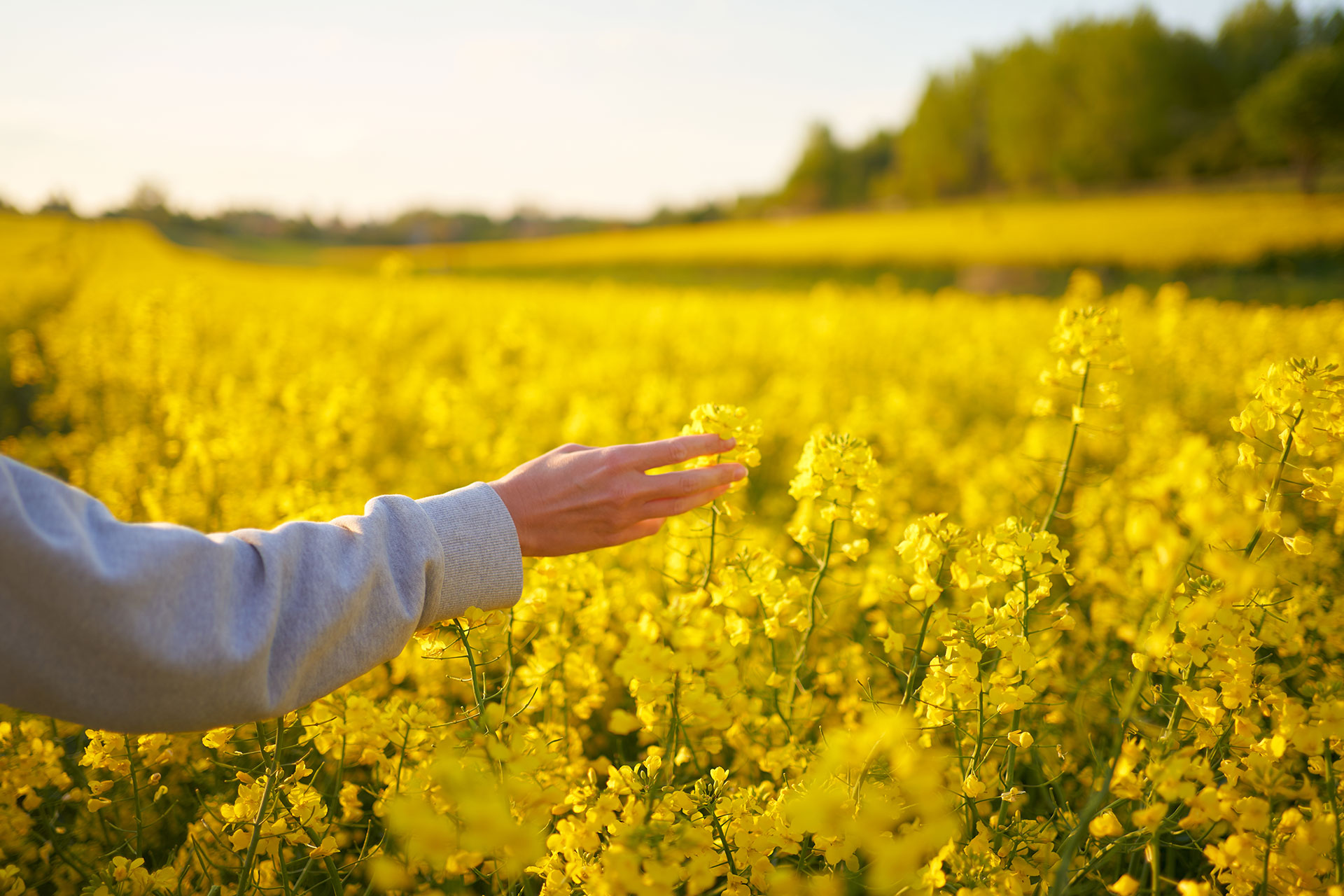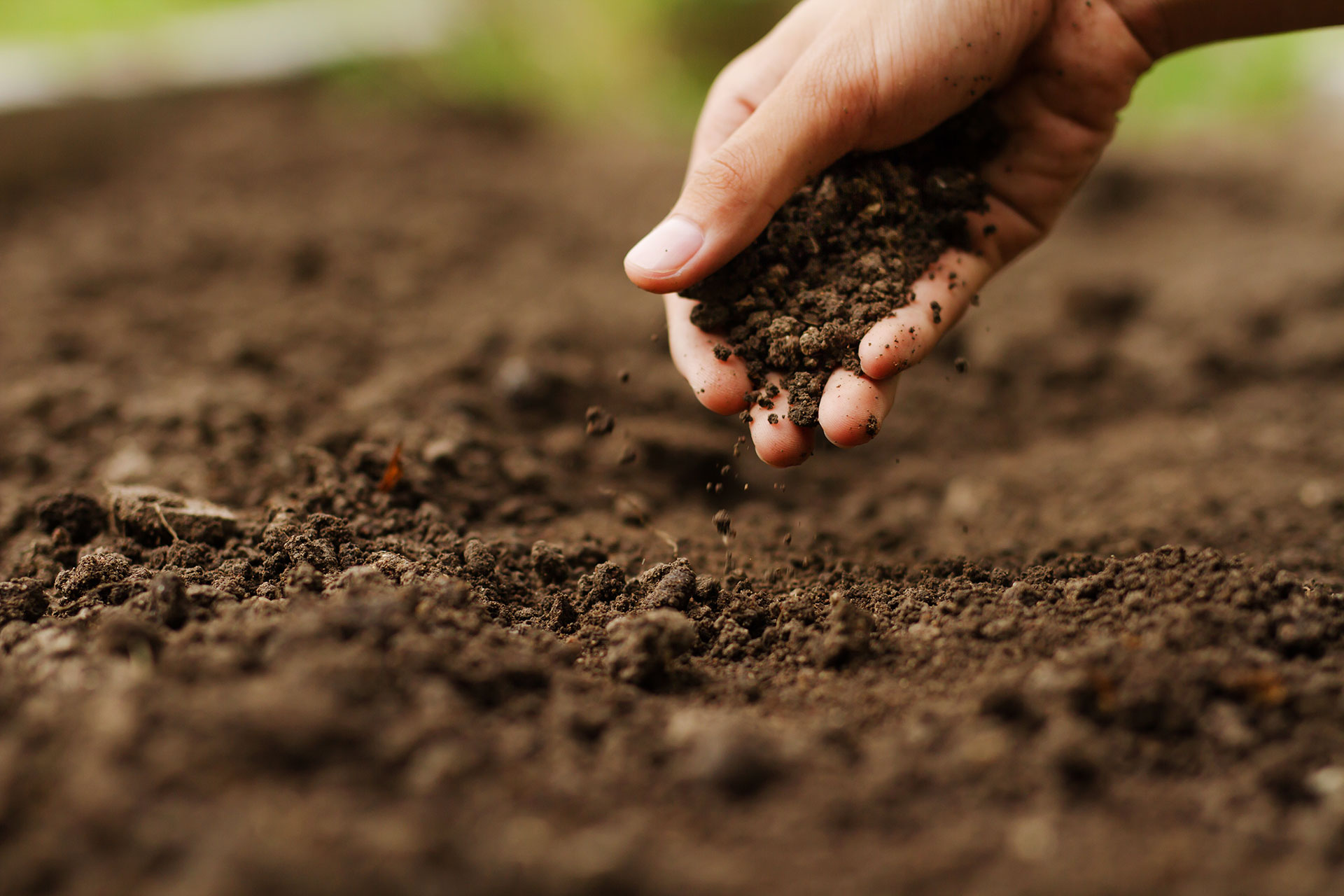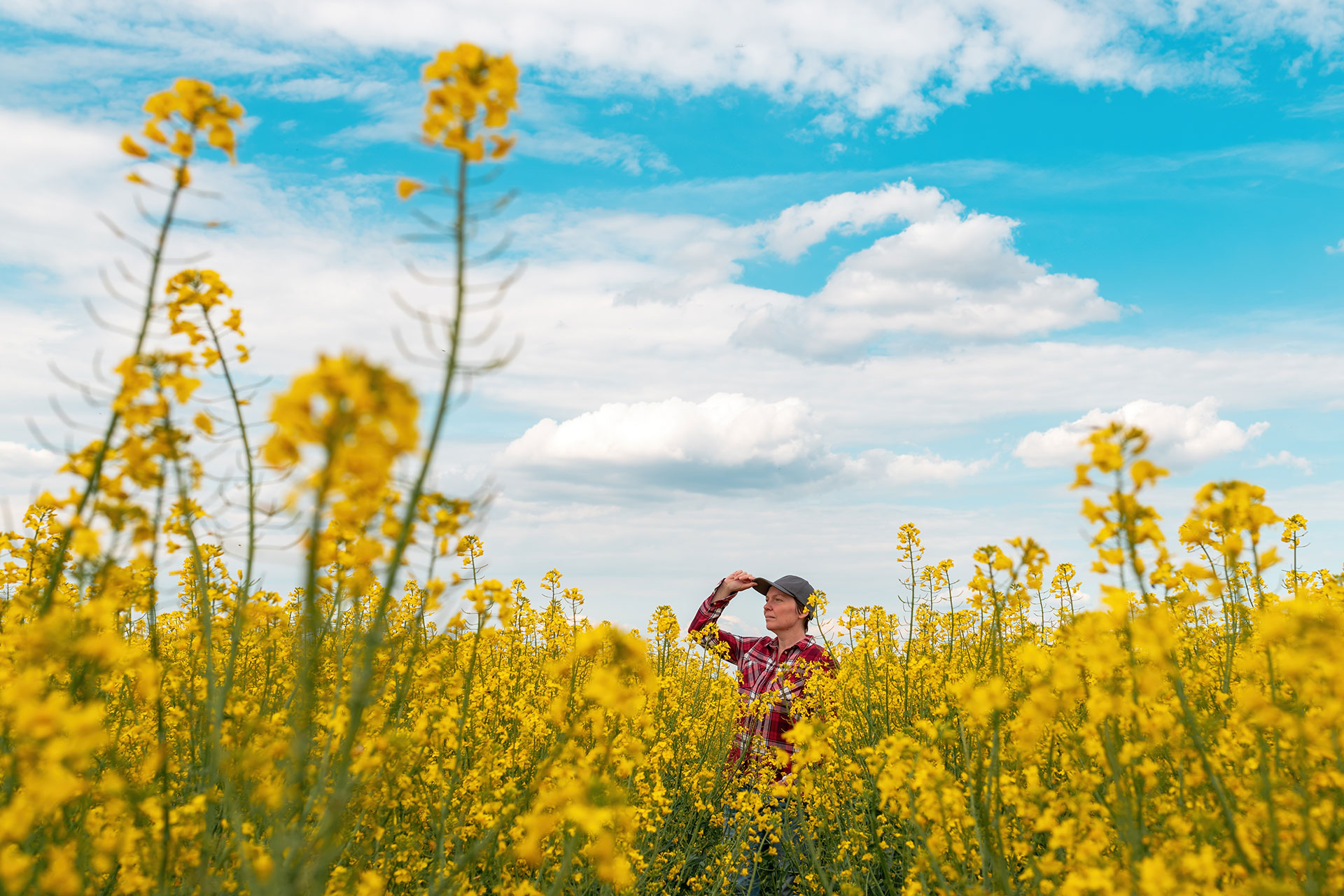The beauty of canola, as it spans across the prairies, is not just a sight to behold for us – canola’s stunningly bright flowers are also a paradise for bees.
Not only is the relationship between canola and bees symbiotic, the relationship between a canola farmer and a beekeeper is also mutually beneficial. Together, they are good for the health of our agroecosystem and our economy.
Concern about the health of our bee population has grown in recent years as we’ve come to realize the impact of climate change on this species and the important role bees play in maintaining the health of our ecosystems. However, you might be surprised to learn the number of honeybees in Canada has reached record levels in the past decade. The number of bee colonies Canada-wide now sits at 773,000, up significantly from 600,000 colonies in the early 2000’s1. And more than 70% of these colonies call Western Canada home1, illustrating how canola has become one of the most important crops for increasing bee populations.
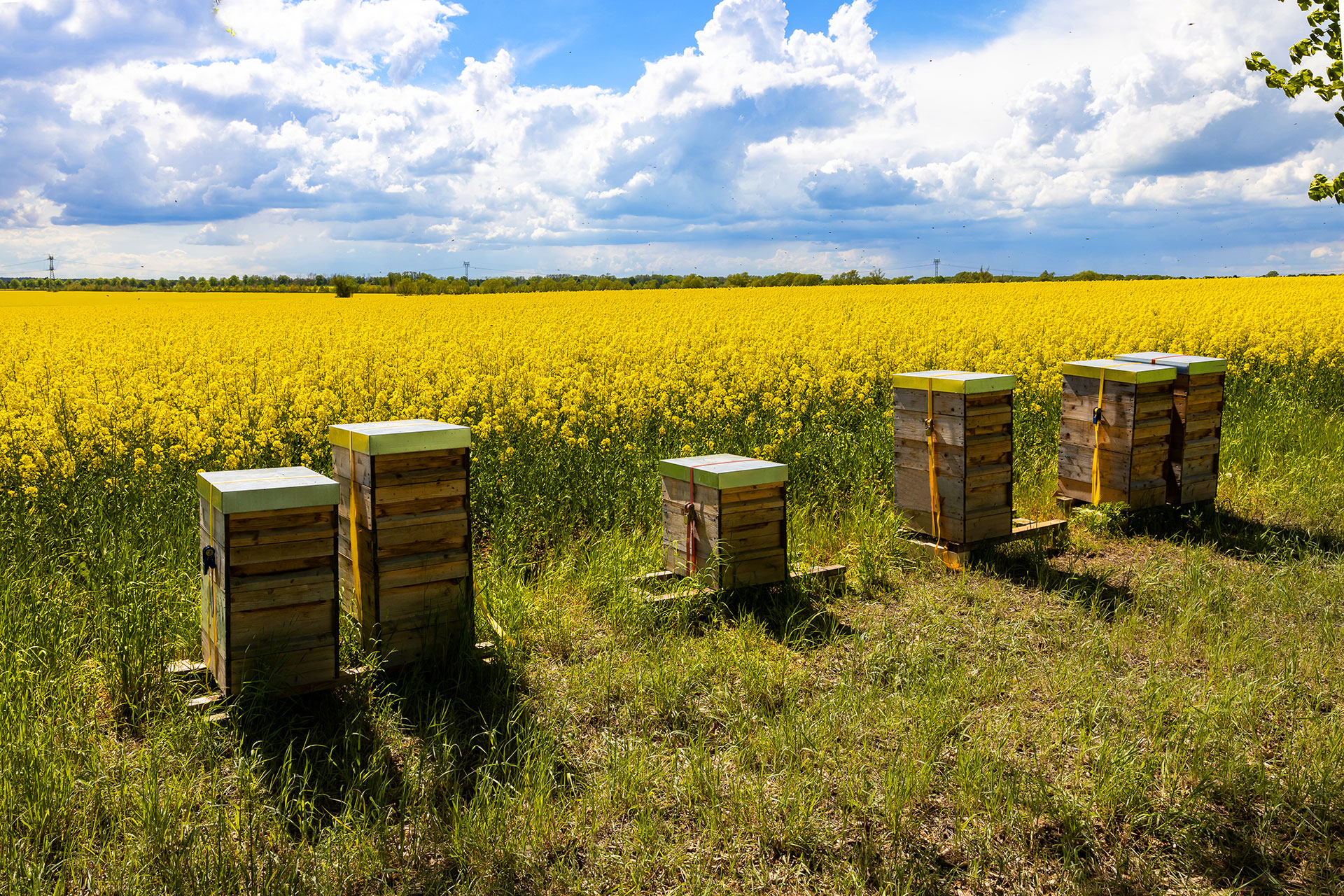
Canola for bees
Since the development and rapid expansion of canola in Canada, we have learned how beneficial canola has become to bees, and vice versa. Canola provides an abundant supply of pollen with an ideal mix of amino acids, protein, and fats for bees. The plentiful nectar found in the plant’s blooms offer a good sugar profile for honey production and the nutritional balance helps bees produce excellent honey. Bees can also be extremely efficient workers within a canola field. Because the blooms on canola plants are so plentiful, bees can feed without traveling far, meaning, at peak foraging times, a flowering canola plant can be visited by more than 50 honeybees every hour1. Canola flowers also bloom longer than most other crops, and one field in bloom can nourish a colony of bees for up to one month.
Canola farmers work closely with beekeepers to protect bees and maintain the mutually beneficial relationship between plant and pollinator. The two industries pay close attention to hive health and ensure canola farming practices don’t negatively impact the health of these species. Seed treatments used for canola do not put pollinators at risk as they remain on the seed and are not released into the air. Field studies are frequently conducted and show no chronic or acute poisonings from seed treatments when analyzed at field scale rates.
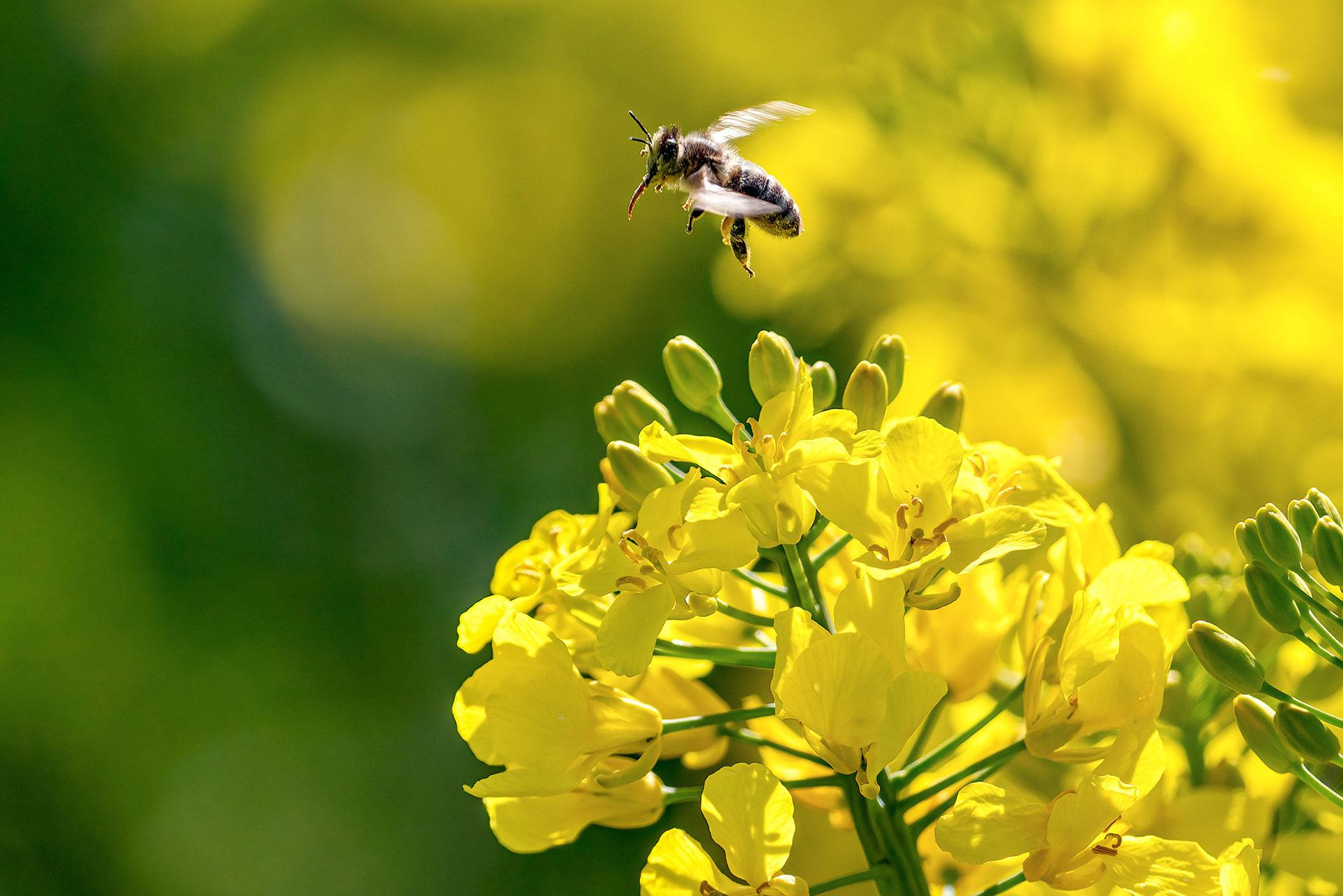
Bees for canola
While beekeepers seek out canola fields due to their nectar and pollen source, canola growers also know it’s in their best interest to protect bees. This is because bees are among the most important pollinators in the world. They are responsible for pollinating a wide variety of plants, including many of the crops we rely on for food. Without bees, plants like canola would not be able to reproduce, and the consequences would be dire. In addition to providing us with food, bees also play a critical role in maintaining the health of our ecosystems by pollinating plants, which helps to create habitats for other organisms.
The perfect pairing
Canola and bees thrive together. Next time you see a jar of honey, a beeswax wrapper or a bee buzzing by, stop and think about the importance of canola crops in maintaining a healthy bee population. Similarly, when you see a bottle of canola oil, use cooking spray or apply hand cream, think about the many bees that helped pollinate each of the canola flowers that turned into seeds to be crushed into oil to help make your favourite products.
